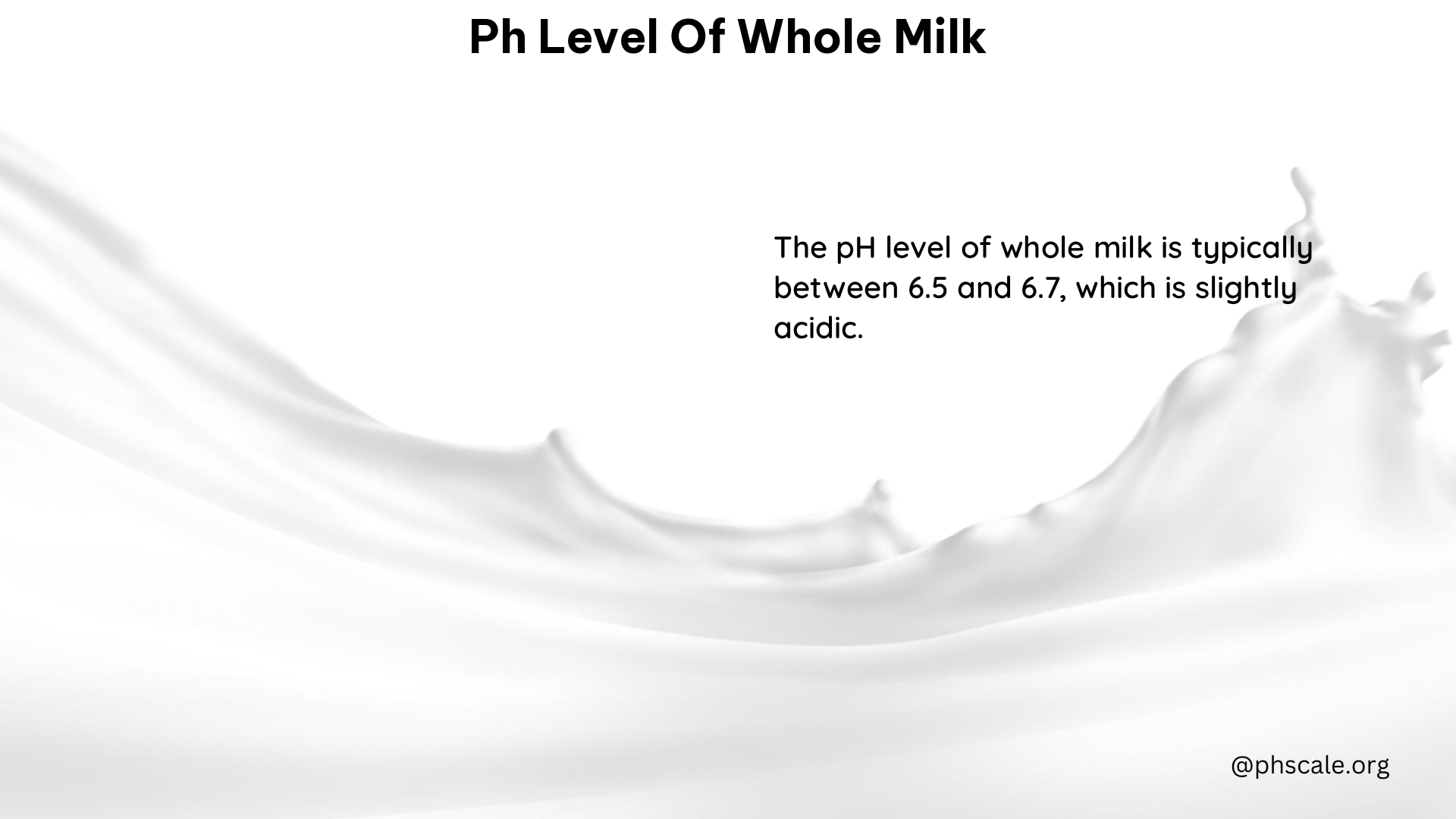The pH level of whole milk is slightly acidic, ranging from 6.5 to 6.9. This means that milk is an acid-forming food, although it does not necessarily taste acidic. The pH level can vary depending on the source of milk and the stage of spoilage. Understanding the pH level of whole milk is crucial for maintaining its quality and ensuring it is safe for consumption.
Understanding the pH Scale
The pH scale ranges from 0 to 14, with 7 being neutral (like pure water). Values below 7 are acidic, and those above 7 are alkaline. Each pH level is 10 times more acidic or alkaline than the next. The human body maintains a slightly alkaline pH, with blood pH ranging from 7.35 to 7.45. Diet can temporarily shift the body’s pH, but a balanced diet helps maintain overall pH stability.
Effects of pH on the Body

Acid-forming foods, such as milk, dairy products, meat, poultry, fish, and most grains, can have an impact on the body’s pH balance. Consuming too many acid-forming foods can cause health problems, especially for those with underlying conditions. On the other hand, alkaline-forming foods, such as fruits and vegetables, can help improve muscle mass and overall health.
Testing the pH Level of Whole Milk
There are several ways to test the pH level of whole milk:
- pH Strips: pH strips can be used to test the acidity of milk samples. The color reading on the strip indicates the pH level.
- Body pH Testing: pH levels can be tested using pH or litmus paper. This test uses saliva or urine to give an approximate reading. However, for an accurate pH test, it is recommended to consult a doctor.
Contaminants and Chemicals in Milk
Milk spoilage can lead to bacterial growth, which affects the pH level. As bacteria grow, the pH of milk drops initially and then rises. This spoilage can affect the nutritional value of milk, making it less suitable for consumption. Regular testing of pH levels helps ensure the quality of milk.
Balancing pH Levels
Maintaining a balanced diet with both acid-forming and alkaline-forming foods can help maintain overall pH stability. For those who need to limit acid-forming foods, plant-based milks like almond milk or soy milk can be a more alkaline-forming alternative.
Home Remedies and Solutions
To maintain the pH level and quality of whole milk, there are several home remedies and solutions:
- Pasteurization: Pasteurizing milk can help maintain its quality and nutritional value. It is recommended to pasteurize only the quantity needed to avoid repeated pasteurization.
- Cooling and Storage: Proper cooling and storage of milk can help prevent spoilage and maintain its pH level.
Conclusion
The pH level of whole milk is slightly acidic, ranging from 6.5 to 6.9. Understanding the pH scale, the effects of pH on the body, and the methods for testing the pH level of milk are crucial for maintaining the quality and safety of whole milk. By implementing home remedies and solutions, such as pasteurization and proper cooling and storage, you can ensure that the pH level of your whole milk remains within the optimal range.
References
- Healthline. (2018). The pH of Milk and Plant-Based Alternatives: Effects on the Body. Retrieved from https://www.healthline.com/health/ph-of-milk
- BYJU’S. (n.d.). What is the pH of Milk? Retrieved from https://byjus.com/question-answer/what-is-the-ph-of-milk/
- NCBI. (2023). Investigation on Bacterial Growth and pH in Milk after the Expiration Date. Retrieved from https://www.ncbi.nlm.nih.gov/pmc/articles/PMC10622597/
- PickYourOwn.org. (n.d.). pH of Eggs and Dairy. Retrieved from https://www.pickyourown.org/pH-of-dairy-eggs.php
- CalfStar. (2020). Why Would We Need to Test pH in our Whole Milk? Retrieved from https://calfstar.com/may-2020-calf-blog/.
